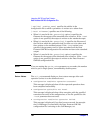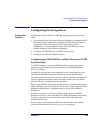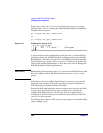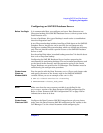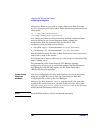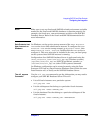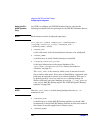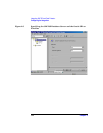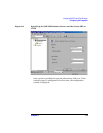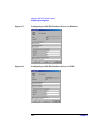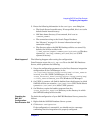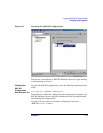
Integrating SAP R/3 and Data Protector
Configuring the Integration
Chapter 2170
Using the CLI -
UNIX Systems
Only
On UNIX, to configure an SAP R/3 Database Server, execute the
following command with root privileges on the SAP R/3 Database Server:
NOTE Each instance must be configured separately.
util_sap.exe -CONFIG <ORACLE_SID> <ORACLE_HOME> \
<targetdb_connection_string> <SAPTOOLS_DIR> \
[<SAPDATA_HOME>], where:
• <ORACLE_SID>
is the is the name of the Oracle database instance to be configured
• <ORACLE_HOME>
is the directory in which Oracle binaries are installed
• <targetdb_connection_string>
is the login information to the target database of the
<user_name>/<password>@<service> format, described in
“Glossary” on page G-1.
The <user_name> is the name by which a user is known to Oracle
Server and to other users. Every user is identified by a password, and
both must be entered to connect to an Oracle database. This user is,
by default, used by brbackup and brarchive during backup. To
define a different user when backing up, use the -u <user_name> as
a BR Backup SAP R/3 backup option. See “SAP R/3 Specific Backup
Options” on page 186.
NOTE The user <user_name> is visible during backup when the ps -ef
command is run.
• <SAPTOOLS_DIR>
is the directory in which SAP R/3 backup utilities are stored. SAP
recommends to install SAP R/3 backup utilities on both local nodes in
the cluster in case the application is cluster-aware.
• <SAPDATA_HOME>



